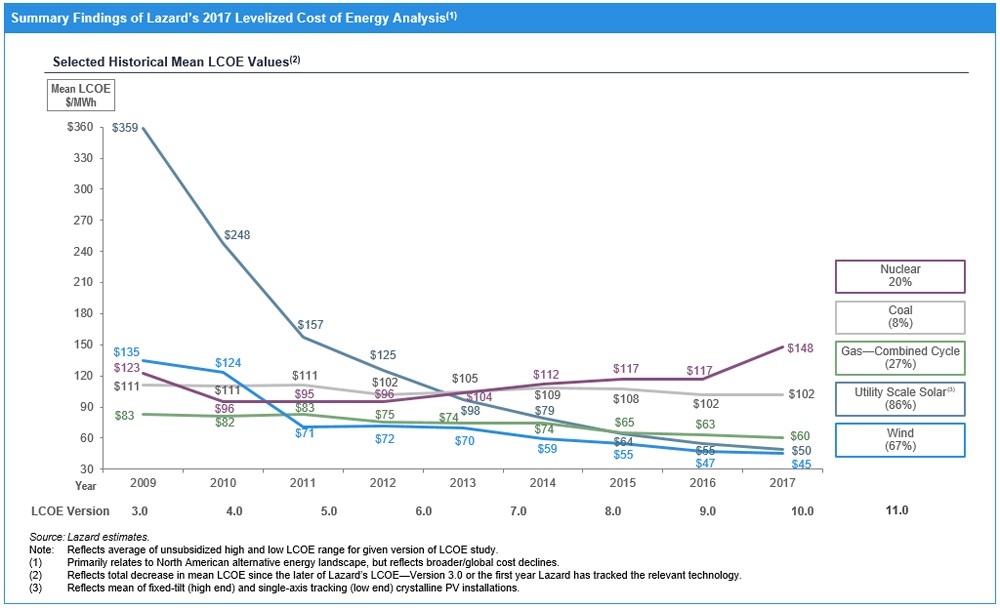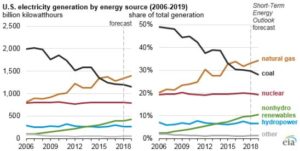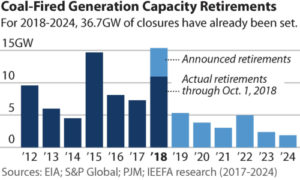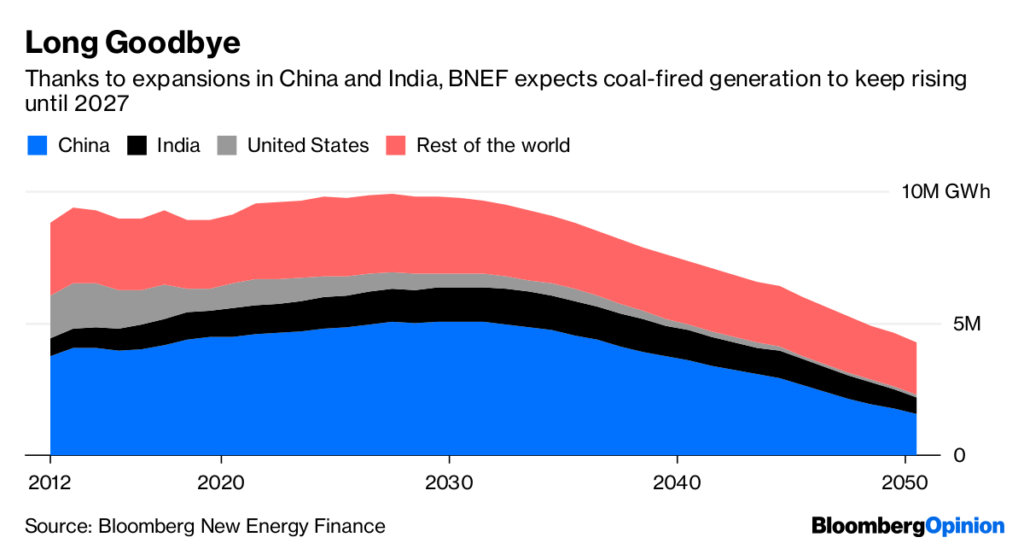“Grid Parity” is the term used in the energy sector to describe the cost of adding electricity into power distribution systems (high voltage wires – aka ‘The Grid’) as the same for different methods of producing electricity. It is important to note that the cost has to be the true, unsubsidized cost for Grid Parity to be a reality.
Coal fired generation is often used as the baseline for Grid Parity calculations as it is the less expensive form of mass producing electricity.
The question of what other forms of electricity production are in the running for Grid Parity varies by the part of the world you live in and what the current economic conditions are.
For instance wind is constantly decreasing in cost but is has its most expensive and largest components manufactured in Europe so the transport costs to have turbines installed in Canada or US is considerably more than it is in France or Germany.
Other fossil fuel sources like natural gas have their price fluctuate day to day and region to region. Japan has no natural gas supplies so its cost is dramatically higher than Canada’s because they need to have natural gas liquefied (LNG) and tankered to their shores.
However, we can make some broad statements that are generally true through most of the developed world:
- Solar, Wind and Natural Gas have all far surpassed reached Grid Parity
- Coal has increased in cost as aging facitilies require more and more maintenance
- Nuclear has increased but this should be a very temporary change because there are new vastly more efficient and safe nuclear power plants on the way
Why Not Go All Wind & Solar Now?
If you look at the chart above in issolation, you would be right to think that society can feed its ever increasing demand for electrical power through just wind and solar. However there are other factors at play beyond price.
Source Stability:
Wind and solar are intermittent meaning that energy utlitity companies can not rely on them 24/7 to produce the base load power we all need. Specicially peak times like 4pm to 7pm when business, factories and homes are all using substantial amounts of power.
There are two ready solutions to this base load power issue:
- Use electricty storage (like batteries) to overproduce in the down times
- Advance other non-coal technologies that produce all year like nuclear and geothermal
Conversion Time:
It can take 5 years to get substantial solar and wind farms through investigation, design, financing and government regulatory approval processes. Then orders for hardware made in Europe and Asia can have lead times of more than a year. Add to that shipping time to get the turbines or panels shipped to their final destination before construction can start in earnest. Add to all of that unexpected delays (i.e legal challenges), weather delays (i.e. winter storms or huricains), and add-on infrastructure construction (i.e. extention of high voltage power lines to the new farms), and this process can take a decade to get completed.
Conversion Costs:
Power stations and grids are constructed with a 25 to 100 year amortization. Natural Gas is a natural and relatively easy conversion from coal fired electricity production which is why even under self proclaimed coal supporter former President Trump coal production decreased more that twice as fast under him as it did with his predicessor, President Obama. Production did not go away… it just went away from coal and is now natural gas fired.
Having China shutdown a coal plant it built two years ago is just not practical and is just not going to happen. It is no small undertaking in Western Countries eithter. Canada, the US, UK, France, Germany… will find it very difficult to convince utility company shareholders to embrace the ‘public good’ when their investment dollars are on the line.
Coals Long Goodbye
The chart below from Bloomberg is likely too pesimistic because:
- The COVID-19 pandemic has moved the goal posts
- Government regulation against coal is likely to be agressively expanded from the time when this chart was produced under a renewed Paris climate accord and US President Biden
However, it does provide some realistic guidance from reasonable economists and energy experts:
Grid Parity may have been crushed by solar and wind but it is going to take decades to coal to go away and then more decades for natural gas to go away.







0 Comments